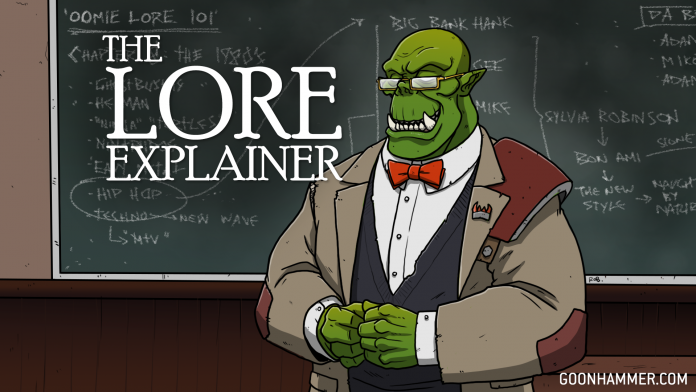In recent years, as the Age of Sigmar game has established itself, the lore behind it has evolved into a fascinating and intriguing narrative setting. While it does take Warhammer Fantasy Battles as a foundation the Age of Sigmar lore is no mere re-boot or re-hash of its predecessor. It’s a distinctive and unique fantasy reality in its own right – and it’s really rather good. The story so far is split into three epochs: The Age of Myth, The Age of Chaos and The Age of Sigmar. In this article we’ll be giving a very basic rundown of the first of those epochs, the Age of Myth.
The Age of Myth
Upon seeing the dwindling popularity and profitability of Warhammer Fantasy Battles, Archaeon the Everchosen sets in motion the events of the End Times, which will eventually see the destruction of the world-that-was.
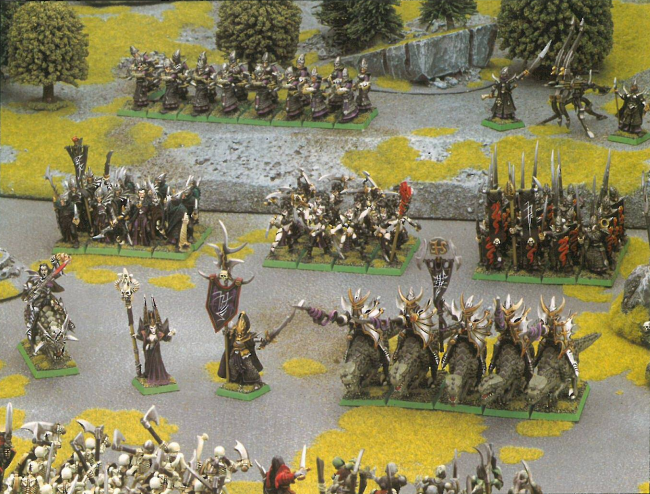
Sigmar, the god-king, survives the apocalypse by clinging on to the broken pieces of the old world. Not in the same way that guy at your local games club clings on to the old world, by nostalgically lecturing you about Fantasy Battles’ superiority to Age of Sigmar, but by literally clinging to a smashed-up piece of rock as it hurtles through the void of space.
Dracothian, the celestial star drake, sees this floating space-hobo and decides they should be friends, showing Sigmar to the burgeoning Mortal Realms. There Sigmar discovers eight massive planes of existence, formed from the solidified winds of magic: heavens, light, shadow, life, death, fire, metal and beasts. Each realm is an enormous and unique world of its own, reflecting something of the character of its patron magic. Sigmar gravitates to Azyr, realm of heavens, and makes it his own.
Pantheon Assemble
Populations of humans, dwarves, elves, orcs, and goblins have survived from the old world to populate the realms, only now they have new, copyrightable names. There are also numerous gods and demi-gods for Sigmar to befriend or fight (or sometimes both at once) as he explores the realms.
On a trip to Chamon, the realm of metal, Sigmar finds two of the dwarven (now duardin) gods, Grimnir and Grungni, and reunites them with their people. Grungni, god of smithing, goes on to lead a technological revolution among the duardin. Grmnir, on the other hand, ventures off to the realm of fire, Aqshy, because that’s where the fighting’s good. (That boy just loves to fight.) He finds himself a lovely little fight with Vulcatrix the mother of all Magmadroths. It’s such a good fight that they both die doing it and scatter their remains across the realms. A whole religion emerges from this as clans of naked warrior dwarves rise up to collect as much ur-gold as possible, believing Grimnir’s scattered essence to be contained within it.
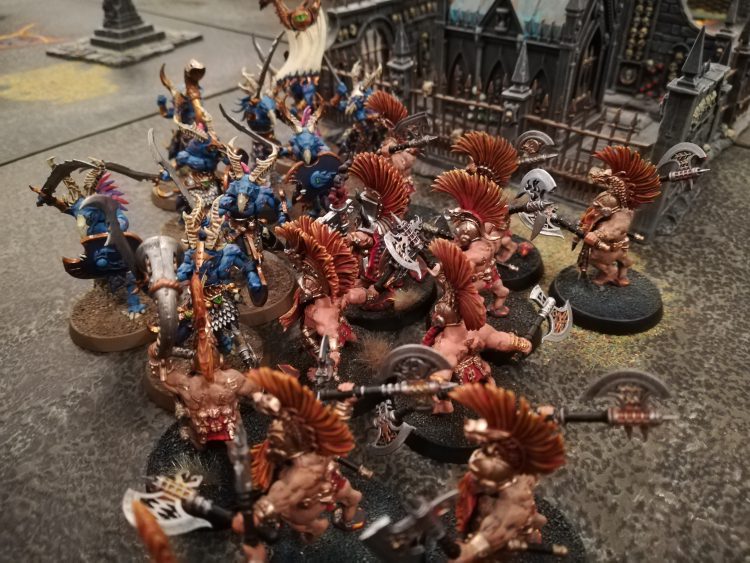
The elf (now aelf) population, on the other hand, is a small and dispersed one. The scarcity of aelves is largely due to how devilishly moreish they are. During The End Times Slaanesh, the Chaos god of excess, developed a taste for aelven souls and, just like starting a tube of Pringles, couldn’t stop himself until he had eaten every aelf he could find.
The surviving aelves are largely galvanised by devotion to five main gods, who Sigmar meets as he travels the realms. The brothers, Teclis and Tyrion, residents of Hysh (realm of light) lead their people in the pursuit of enlightenment and arcane awakening, whilst Malerion masters the dark aelves of Ulgu (realm of shadows.)
Alarielle, the goddess of life, unsurprisingly, is drawn to the realm of life, Ghyran, where she plants the seeds of her old world children, and we see the Sylvaneth birthed into the Mortal Realms to tend to the forests and wild places, with a spattering of aelves, living among them in harmony.
Even Khaine, the aelven god of murder, musters a significant following, despite the setback of being dead (so what’s your excuse?). Out of the goodness of her own heart, Morathi, fresh from escaping the colon of Slaanesh, installs herself as the supreme leader of the Khainite cult, and ‘mouthpiece’ of the dead god. Charlatan that she is, she uses her newly borrowed followers to begin increasing her own power with an aim to, eventually, achieving godhood.
Now established in their own realms, and with their own people, Teclis, Malerion, Alarielle and Morathi are added to club Sigmar.
In short, the early Age of Myth basically consists of Sigmar wandering the realms adding new people to his pantheon, like a post-credit Nick Fury. Aside from the aelven and duarden gods, Sigmar also adds two very unlikely friends to his merry band.
In the realm of beasts, Ghur, he meets Gorkamorka (or Gork and Mork) the two-for-the-price-of-one double-headed god of destruction. Gorkamorka is trapped in a never-ending rumble with Drakatoa the living avalanche. Sigmar rescues him, and by way of thanks, the god of the orruks, grots, troggoths, gargants and ogors (the races formerly known as orcs, goblins, trolls, giants and ogres) attacks Sigmar. The two of them beat the living daylights out of each other, but it’s all in lighthearted fun and they have a jolly good laugh about it afterwards, concluding they should be friends.
But even more unlikely than that, Sigmar’s first and closest ally is actually an old enemy; Nagash, god of undeath, whose corpse Sigmar finds buried under a mountain. After much consideration, Sigmar decides to revive the dead death god, (proving that just because you’re a god, doesn’t mean you can’t do stupid things). Nagash is installed in Shyish (the realm of death) as Sigmar’s representative. What’s the worst that can happen?
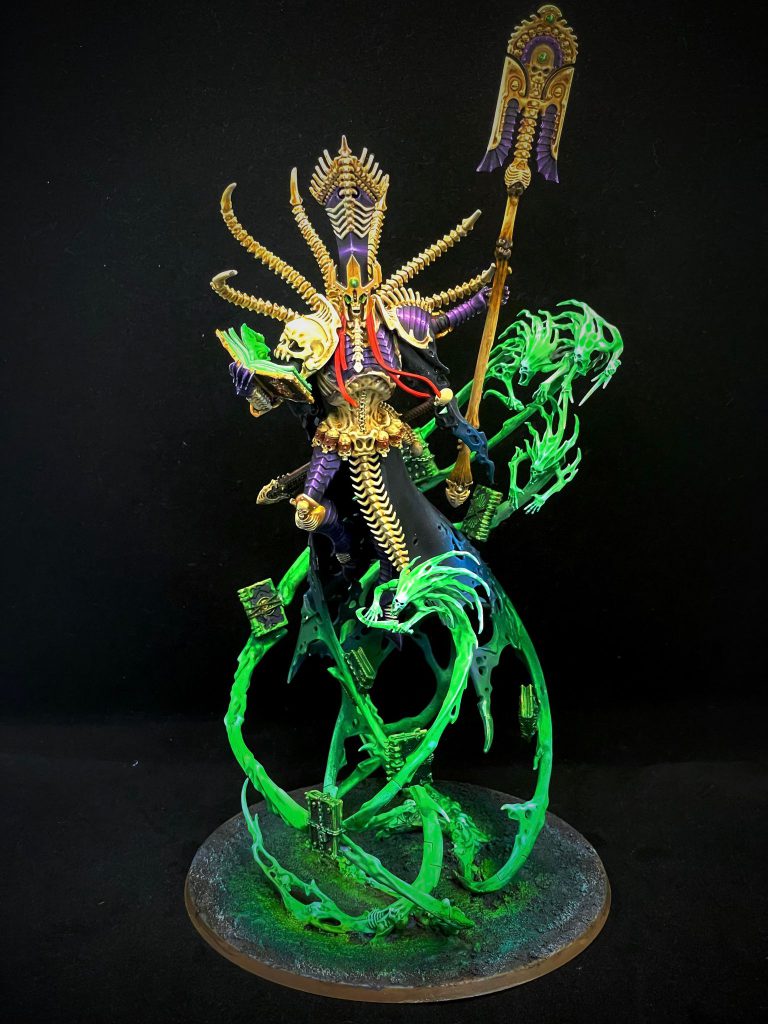
Pantheon assembled, Sigmar and his gods set about ruling the Mortal Realms. A period of unbridled vitality and prosperity follows. Trade flourishes and the population booms. There are a few frictions here and there; the Sylvaneth might snatch the occasional human baby, or the cult of Khaine might perform the odd human sacrifice, but what are a few mortal deaths among friends? The gods are, generally speaking, getting on with each other, so there is a sort of peace among their peoples too.
Troubles in Paradise
That’s not to say the gods are entirely of one accord. Gods have god-complexes, that’s sort of their thing, and eventually cracks begin to appear within the Narcissistic Nine.
Malerion, Tyrian, Teclis and Morathi – unbeknownst to Sigmar – have their own secret agenda. Morathi’s escape from Slaanesh’s intestines proved that all is not lost for the aelves, and that there are still countless aelven souls confined within the god of excess’ guts. The four of them start to work on a plot to get them back and rebuild the aelven race.
Using Morathi as bait, Slaanesh is lured into Uhl-Gysh, a kind of clu-de-sac of contradictions, located in a small pocket realm between Hysh and Ulgu (the realms of light and darkness). There they imprison Slaanesh in magical chains and begin to extract the aelven souls from its belly, divvying them up between the four of them.
Morathi shapes her allotment of souls into creatures made in her own image (and we’re not talking her old world pleasure-babe image, we’re talking the deformed and hideous gorgon image that Slaanesh’s intestines warped her into) and we see ranks of melusai and khinerai added to the daughters of Khaine cult. We’re not sure exactly what Malerion has done with with his, yet, (but here’s hoping for a new shadow aelf army one day soon.)
Teclis, in an attempt to create an enlightened race like the High Elves of old, begins to lovingly craft his share of the souls into a new form of aelf. However, it soon becomes clear that this first batch are damaged goods. They show no interest in Teclis’ teachings; they will never be the utopian creatures he envisioned. Tecils decides to scrap them and try again.
Naturally, these new creations don’t like the idea of being scrapped, so they run away and seek sanctuary from Teclis in the bottom of the ocean. To top it off they also discover that most of the babies they have are soulless husks that die in infancy. The newly formed Idoneth Deepkin are therefore forced to develop magics based on stealing souls from other mortal beings to keep their young alive.
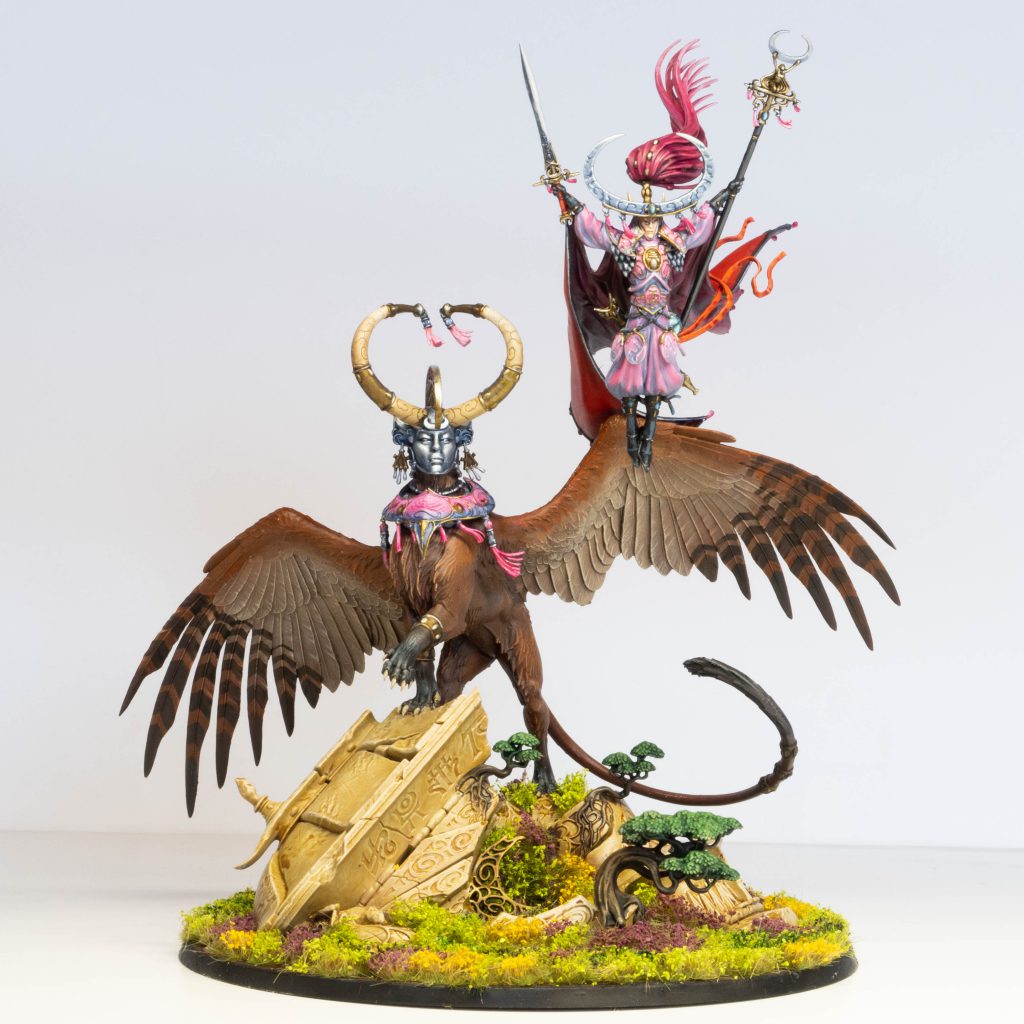
Teclis does eventually succeed in creating his desired aelven master race, and settles down to teach them his ways, but it isn’t long before they become bloated with arrogance at their own superiority.
Sigmar is unaware of the sneaky goings on of his aelf allies; he has other things on his mind, such as sneaking about himself, hiding secret artifacts all around the mortal realms without his allies knowing.
He also has to worry about things like keeping the destruction god, Gorkamorka, happy during a time of relative peace when there is nothing to destruct. However, there are still fights to be had, so Sigmar puts the green-skin god to good use hunting dangerous beasts throughout the realms. Resentment and boredom will eventually compel the destruction god to leave the band and pursue his own solo projects, but for now the forces of destruction are largely kept quiet and allied to the forces of order.
Likewise, Nagash is kept on side, although clearly his ambitions cannot be contained forever by the pantheon. He gradually asserts his complete supremacy over the realm of the dead, conquering the civilizations that are already there, and slaying all of his competitors. But will that be enough for Nagash? Will he stop at Shyish? (No.) Nagash invades the realm of Life, and a bloody war erupts between him and Alarielle. Eventually a ceasefire is arranged, and compromises are made. The pantheon survives, but only just.
The Age of Myth rolls on. Society flourishes and prosperity comes to all of the realms. All the while, the gods of ruin and chaos are clawing greedily at the fabric of reality, looking for a way in.
Gods and Gamers
The gods in Age of Sigmar are so beautifully ‘human.’ The western perception of the divine is often the idea of a perfect monotheistic being, all powerful and all knowing. But the gods of AOS are petty, ambitious, narcissistic and flawed. But at the same time, they’re relatable, redeemable and sometimes even likable. They learn and grow as characters throughout the story. Ultimately, they’re like us.
Like the pagan gods of human history, they are a dysfunctional soap opera projected into the cosmos. They capture our imagination because they act just like us and do all the stupid things we do, only blown up to cosmic proportions. They cause us to reflect on our own identity and humanity. Yes, AOS is only a game, but in many ways it also holds a mirror up to those who play it.
I wonder why the AOS story appeals to us wargamers so much. Could it be something to do with the way the gods take and shape the raw soul-stuff of their people, personalize them, and then set them to do their will on the battlefield? Whether it be the Tyrion and Morathi extracting souls from Slaanesh and reshaping them according to their own designs, or Nagash manipulating the spirits of the dead to his will, or Allarielle planting her own children and establishing them according to her moods, or Sigmar reforging his Stormcast on the Anvil of Apotheosis, they’re all, essentially, just kit-bashing bits off of a sprue. It all sounds pretty familiar, right?
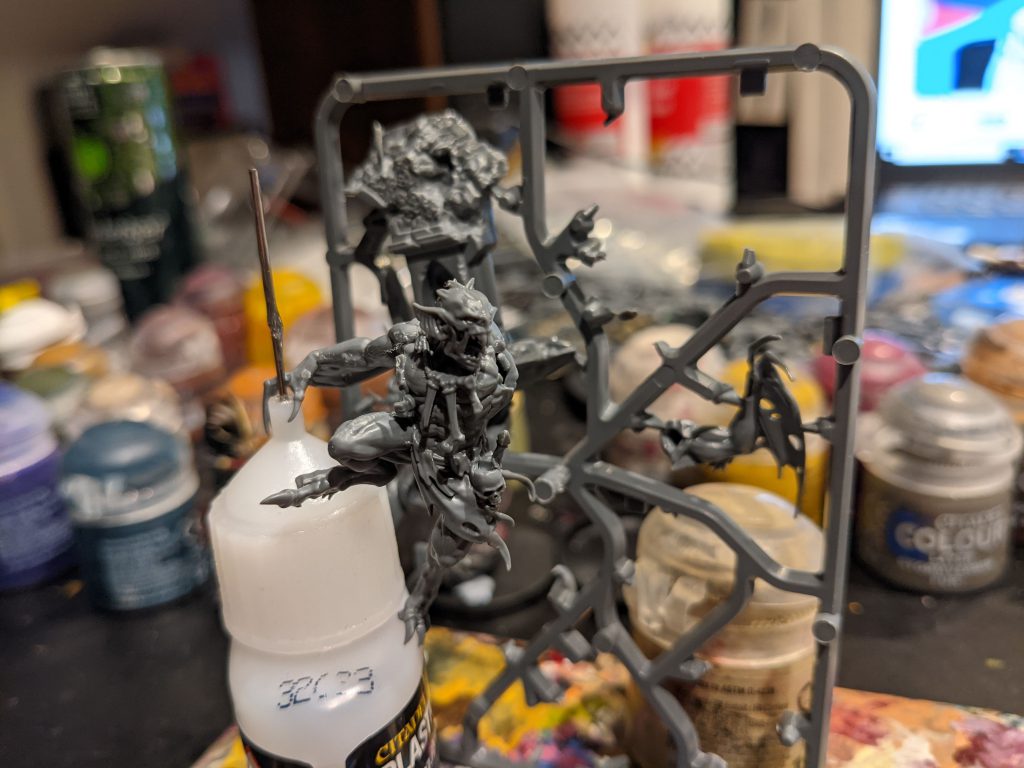
Have any questions or feedback? Any lore topics you’d like to see covered? Drop us a note in the comments below or email us at contact@goonhammer.com.
